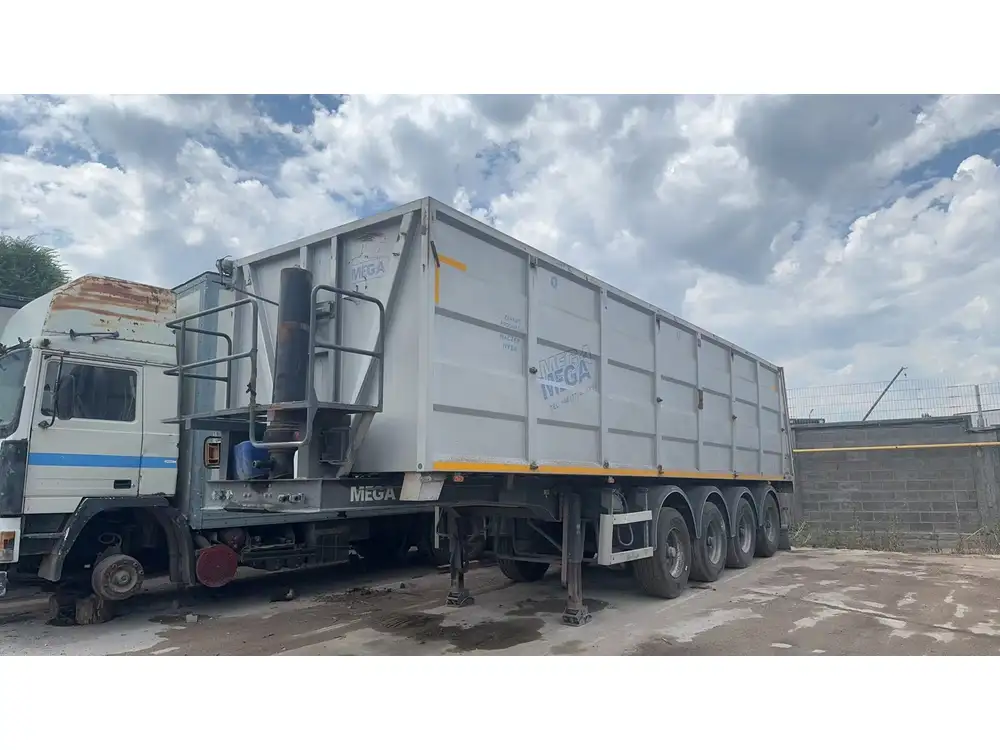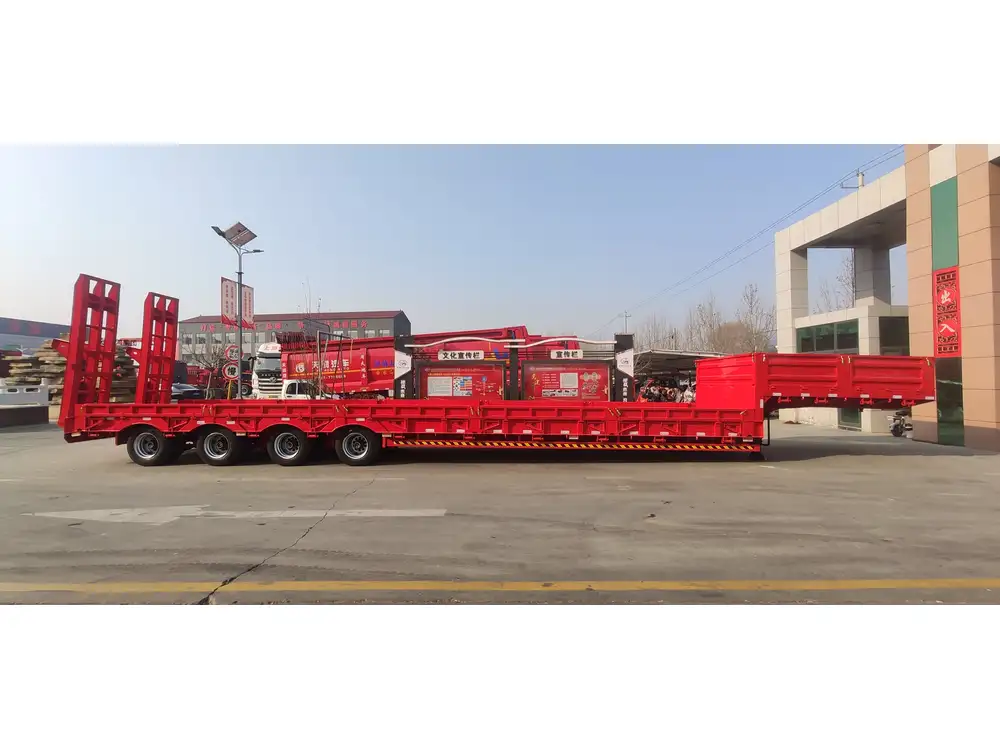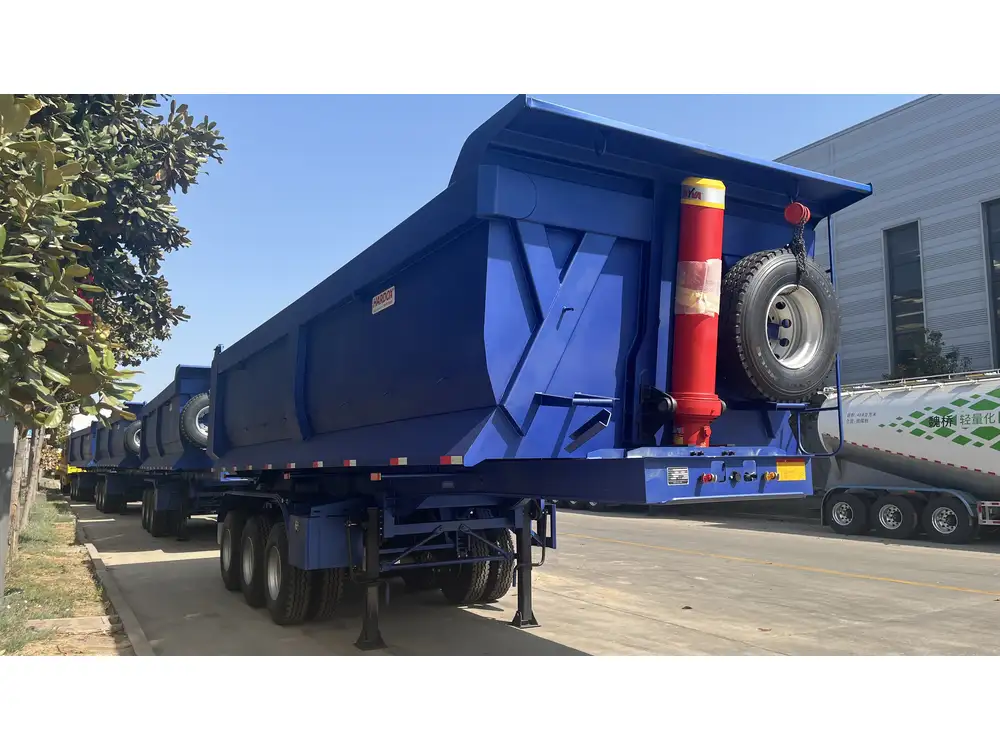Understanding the weight capacity of semi tractor trailers is crucial for manufacturers, logistics companies, and drivers alike. This article provides an in-depth exploration of the factors influencing weight limits, regulations, and practical considerations for hauling goods on the road.
Understanding Semi Tractor Trailers
What Is a Semi Tractor Trailer?
A semi tractor trailer, often simply referred to as a semi, is a combination of a tractor unit (the front portion containing the engine and driver’s cab) and a trailer (the cargo-holding portion). This configuration allows for efficient transportation of goods over long distances. The versatility and various configurations of semi-trailers enable them to carry different types of loads, ranging from general freight to specialized cargo like hazardous materials.

Components Affecting Weight Capacity
The ability of a semi tractor trailer to haul weight is influenced by several components:
Gross Vehicle Weight Rating (GVWR): This is the maximum weight a vehicle is rated to safely carry, including its own weight. It encompasses both the tractor and the trailer.
Axle Configuration: The number of axles on the tractor and trailer influences weight distribution. More axles typically allow for higher weight capacity.
Tire Ratings: Each tire has a load rating that contributes to the overall weight limit. Proper tire selection is essential for safe hauling.
Frame and Suspension System: The strength of the trailer’s frame and its suspension system directly impact its ability to support heavy loads without damage.
Federal Regulations on Weight Limits
In the United States, weight limits for semi tractor trailers are regulated by federal law. The following guidelines are crucial:
| Regulation | Weight Limit |
|---|---|
| Maximum Gross Vehicle Weight | 80,000 pounds |
| Maximum Single Axle Weight | 20,000 pounds |
| Maximum Tandem Axle Weight | 34,000 pounds |
| Federal Bridge Formula | Varies based on axle spacing |
These regulations ensure safety on the roads and protect infrastructure from excessive wear and tear.
Calculating Payload Capacity

Step-by-Step Calculation
To determine how much weight a semi tractor trailer can effectively haul, follow these steps:
Identify the GVWR: Check the manufacturer’s specifications to find the semi’s GVWR.
Subtract the Truck Weight: Determine the tare weight (weight of the empty vehicle) of both the tractor and the trailer. This information can often be found on the vehicle’s data plate.
Determine Maximum Payload Capacity: [ \text{Payload Capacity} = \text{GVWR} – \text{Tare Weight} ]
For instance, if the GVWR of the vehicle is 80,000 pounds and the combined empty weight of the tractor and trailer is 30,000 pounds, the payload capacity would be: [ 80,000 – 30,000 = 50,000 \text{ pounds} ]
Example Scenarios of Weight Capacity
| Scenario | GVWR (lbs) | Tare Weight (lbs) | Payload Capacity (lbs) |
|---|---|---|---|
| Standard Semi with 2 Axles | 80,000 | 28,000 | 52,000 |
| Long-Haul Truck with 3 Axles | 80,000 | 30,000 | 50,000 |
| Specialized Flatbed Trailer | 84,000 | 32,000 | 52,000 |
| Tandem Axle Dump Truck | 60,000 | 26,000 | 34,000 |
These examples help illustrate the potential payload capacities based on different types of semi tractor trailers.
Importance of Weight Distribution

Proper Loading Techniques
Weight distribution is vital in ensuring stability and safety while driving. Unbalanced loads can lead to dangerous situations, including rollovers or tire blowouts. Consider the following best practices to ensure proper weight distribution:
Center the Load: Place the cargo as close to the center of the trailer as possible. This minimizes the risk of swaying while on the road.
Secure the Cargo: Use straps, chains, or other securing mechanisms to prevent shifting during transit.
Check Axle Weight: Distribute weight evenly across axles to avoid exceeding the weight limits on a single axle.
The Role of Load Scale Weighing
Utilizing a portable load scale allows truck drivers to measure the weight of their cargo accurately. This practice provides the following benefits:
Avoiding Overweight Fines: By weighing loads before departure, drivers can avoid hefty fines incurred for exceeding weight limits.
Enhancing Safety: Proper weight measurement contributes to safer driving conditions by minimizing the risk of accidents due to improper loading.
Factors Influencing Weight Limits Across Regions

Variations in State Regulations
While federal guidelines provide a baseline for weight limits, individual states may impose stricter regulations. Factors that contribute to these variations include:
Infrastructure Conditions: Regions with weaker infrastructure may have lower weight limits to reduce road damage.
Local Governments Policies: States can establish regulations to protect specific communities from heavy vehicle traffic.
International Weight Limits
If a shipment crosses borders, it is essential to adhere to international regulations. For example:
| Country | Maximum Weight Limit (lbs) |
|---|---|
| United States | 80,000 |
| Canada | 88,000 – 100,000 |
| European Union | Generally 88,000 |
Understanding these limits is crucial for logistics companies operating across different borders.
Challenges in Hauling Heavy Loads

Common Issues and Solutions
Hauling heavy loads comes with its own set of challenges. The following are common issues faced in the industry:
Road Restrictions: Certain roadways may have weight restrictions, making it essential to map out routes beforehand.
- Solution: Plan alternate routes that accommodate your load.
Increased Fuel Consumption: Heavier loads lead to higher fuel consumption, impacting cost-efficiency.
- Solution: Ensure regular maintenance and optimize driving techniques to improve fuel efficiency.
Enhanced Wear on Tires and Suspension: Carrying maximum loads can lead to faster wear and tear.
- Solution: Implement regular inspections and maintenance schedules to extend the lifespan of tires and suspension systems.
Innovations in Weight Management Technology
Emerging technologies are helping trucking companies optimize weight management:
Telematics Systems: These systems provide real-time data on load weight, tire pressure, and other relevant parameters.
Wheel Load Scales: Advanced systems can be installed to constantly monitor wheel loads during transit, providing instant feedback to operators.
Automatic Load Adjustment Technologies: These innovations automatically adjust suspension settings based on load weight to maintain optimal handling and tire wear.
Conclusion: Maximizing Load Capacity Safely and Efficiently
In summary, understanding how much weight a semi tractor trailer can haul is a multifaceted endeavor. It involves awareness of vehicle specifications, federal and state regulations, proper loading techniques, and ongoing maintenance. By prioritizing safety and adhering to the guidelines outlined in this article, manufacturers, logistics providers, and transporters can maximize capacity and efficiency on the road.
Ultimately, a comprehensive approach to weight management—embracing technology, following regulations, and implementing best practices—ensures that businesses thrive while maintaining safety and compliance in the ever-evolving transportation landscape.



